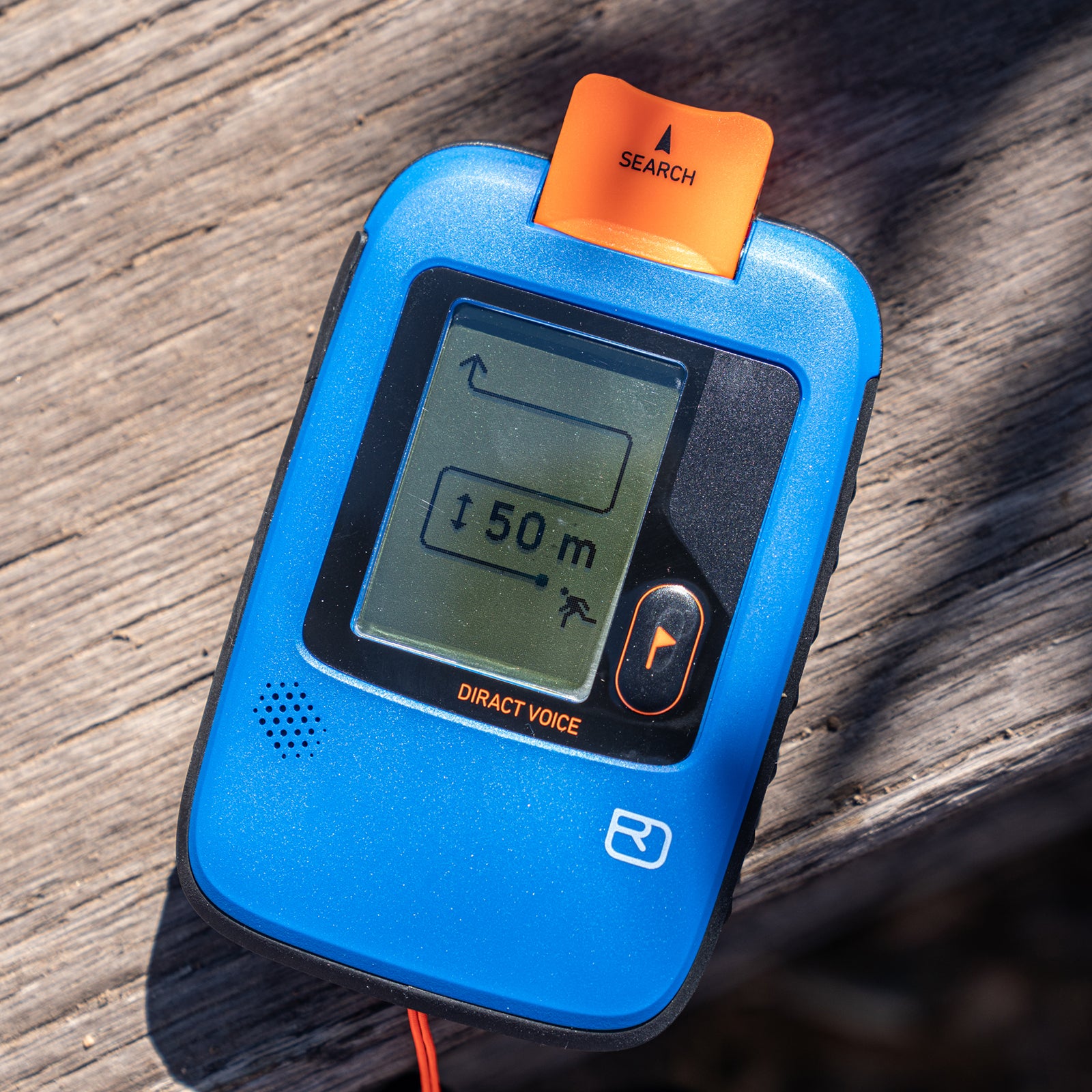The first week of February was tragic. Fourteen peopleÔÇöten╠řbackcountry skiers, one snowmobiler, and three climbersÔÇöwere killed in avalanches across the country, for the most avalanche deaths in one week. In at least two of the incidents, the skiersÔÇÖ beacons malfunctionedÔÇöone was , and another had a . Both conditions inhibited the devicesÔÇÖ ability to accurately send or receive a signal.
These malfunctions were not responsible for the victimsÔÇÖ deaths, but this sudden spotlight reinforces the importance of carrying a functional, efficient transceiver. Beacons are inherently simple devices, and while the technology has improved over the past ten╠řyears, major innovations in the field are rare. ThatÔÇÖs why a new offering from Ortovox, the ($380), which launches in September, is╠řexciting.
The Diract Voice is the first beacon to use verbal directions. When you switch the device from ÔÇťsendÔÇŁ to ÔÇťsearchÔÇŁ mode, it shouts out audible╠řcommands to help guide╠řyour beacon searchÔÇösimilar to GPS directions on a smartphone.╠ř(There will also be a╠řversion without voice commands, for $320.)
I tested the Diract Voice in January and found its directions to be straightforward. Before I acquired the signal of the transceiver I was looking for, the device told me to ÔÇťrun in 50-meter search strips and look out.ÔÇŁ Once I acquired a signal, it instructed me to run straight╠řtoward it╠řand guided me left or right if I veered off course. As I moved within ten╠řmeters of the signal,╠řthe beacon stopped telling me to ÔÇťrunÔÇŁ right or left if I needed course correction and instead said ÔÇťwalkÔÇŁ straight, right, or left. Tom Mason, brand manager at Ortovox USA, says the use of the word ÔÇťrun,ÔÇŁ even after youÔÇÖve acquired a signal, is╠řintentional.
ÔÇťWeÔÇÖve seen that people move quickly during a signal search, but once they acquire a signal, they slow down and start making too many microadjustments,ÔÇŁ Mason says. ÔÇťBut if youÔÇÖre still 40 or 50 meters out, you donÔÇÖt want to slow down. You still want to be moving quickly and making macroadjustments.ÔÇŁ
Ortovox says╠řthe beacon will not bark commands if youÔÇÖve acquired a signal and╠řare heading in the exact right direction. In my test, the voice commands were always being issued, because heading along the direct path╠řtakes a few pointers. I tried to fool the Diract Voice by heading the wrong way and was immediately told to turn around. Once I got within six meters of the buried beacon, my device said to╠řÔÇťgo down to the snow surfaceÔÇŁ and start my fine search. (Ortovox says the six-meter figure might change slightly╠řbefore the final version is released.) At this point, the arrow on the digital screen went away, the numbers got bigger to help with the fine search, and the beacon told me to ÔÇťsearch the smallest value.ÔÇŁ If I started to move away from the signal, the device said, ÔÇťYou were closer.ÔÇŁ
The Diract Voice also╠řallows you to flag the position of different victims if youÔÇÖre dealing with multiple burials. In between commands, it lets out beeps that become more frequent as you get closer to the signal. A digital display on the front screenÔÇöabout 1.5 inches by two inchesÔÇöshows an arrow and numbers. The arrow points you in the general direction of the signal once itÔÇÖs acquired, and the distance╠řcounts down as you get closer to the transceiver youÔÇÖre searching for.
In a press release explaining why the company decided to include voice commands in the Diract Voice, Ortovox quotes Sirgun Holzer, a German psychologist who specializes in neuropsychology. ÔÇťThe voice navigation alone is a great help because you can keep your eyes focused on the situation and not on the device,ÔÇŁ Holzer says.╠řÔÇťVisual information needs to be processed first and then translated into an action. When this is done for us by a voice and the instructions are direct, we save ourselves one step in the processing sequence. Thus, clear instructions mean we need less cognitive capacity, which is already limited in such a situation.ÔÇŁ
Speaking on the same subject,╠řMason compared the Diract Voice to a medical device like a defibrillatorÔÇömany of which provide audible instructions to aid the rescuer. He says that during the development phase, Ortovox product developers speed-tested the commands, landing on a rate of speech╠řthat suggested urgency but didnÔÇÖt add stress.
The Diract Voice uses a rechargeable battery that, according to Ortovox, lasts longer than the standard AA or AAA batteries in other beacons. (The brand wonÔÇÖt give an exact number; itÔÇÖs important to regularly check the battery life on any transceiver you use.) It does say that the Diract Voice easily meets and surpasses the industry standard of 200 hours in transmit mode at 10╠řdegrees Celsius (50 degrees Fahrenheit) and one hour in search mode at -10 degrees Celsius (14 degrees Fahrenheit).
Ortovox claims this battery will not leak, which would resolve the issue of a corroded battery compartment. You canÔÇÖt replace the╠řrechargeable battery like you can with a set of AAAs, but if youÔÇÖre on a long backcountry trip and worried about the battery running out, the Diract Voice can be recharged with a power bank and USB-C cord.
After witnessing an avalanche several years ago in Colorado, my brainÔÇÖs first response was to fog over with stress. I saw my guide disappear, with table-size chunks of snow chasing him down the hill. They╠řmanaged to outrun the avalanche, but before I knew everything was okay, I immediately worried I was going to mess up the╠řsearch process. I know the correct procedure to follow╠řbut still get a tinge of fear every time I strap on a beacon and wonder if IÔÇÖll be able to find someone quickly in the event╠řof a burial. Knowing that the Diract Voice can help guide me in a similar scenario gives me a little peace of mind. IÔÇÖll be adding this device to my quiver, but╠řIÔÇÖll still regularly practice with a normal beacon╠řor with the voice commands turned off, because they canÔÇÖt and shouldnÔÇÖt╠řreplace standard search procedures.
I suspect some veteran backcountry skiers and guides wonÔÇÖt want to use the Diract Voice, because theyÔÇÖre╠řaccustomed to standard beacons and might be annoyed by a device chirping out commands. But for plenty of backcountry skiers, myself included, voice directions have the potential to help us conduct a more efficient search.


